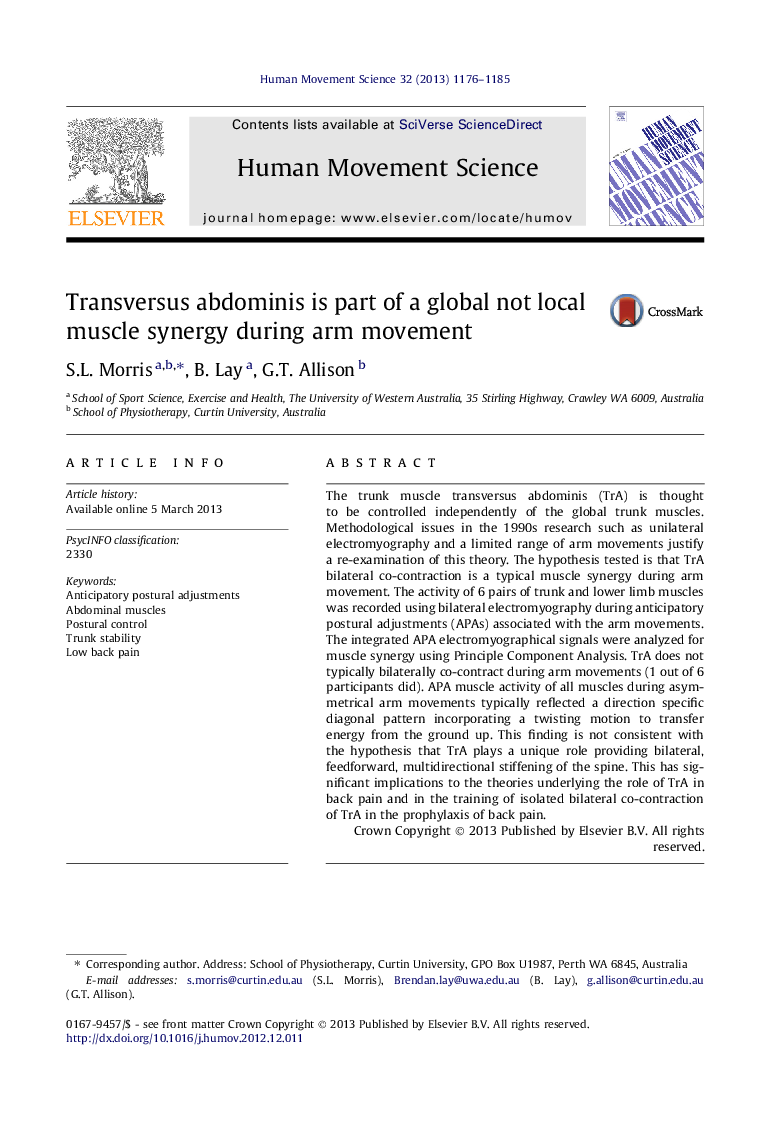| Article ID | Journal | Published Year | Pages | File Type |
|---|---|---|---|---|
| 928364 | Human Movement Science | 2013 | 10 Pages |
The trunk muscle transversus abdominis (TrA) is thought to be controlled independently of the global trunk muscles. Methodological issues in the 1990s research such as unilateral electromyography and a limited range of arm movements justify a re-examination of this theory. The hypothesis tested is that TrA bilateral co-contraction is a typical muscle synergy during arm movement. The activity of 6 pairs of trunk and lower limb muscles was recorded using bilateral electromyography during anticipatory postural adjustments (APAs) associated with the arm movements. The integrated APA electromyographical signals were analyzed for muscle synergy using Principle Component Analysis. TrA does not typically bilaterally co-contract during arm movements (1 out of 6 participants did). APA muscle activity of all muscles during asymmetrical arm movements typically reflected a direction specific diagonal pattern incorporating a twisting motion to transfer energy from the ground up. This finding is not consistent with the hypothesis that TrA plays a unique role providing bilateral, feedforward, multidirectional stiffening of the spine. This has significant implications to the theories underlying the role of TrA in back pain and in the training of isolated bilateral co-contraction of TrA in the prophylaxis of back pain.
► Background theory – TrA acts independently of global muscles. ► Original studies used – unilateral postural EMG, 3 arm movements. ► Hypothesis – TrA is part of global diagonal synergy not independent. ► Findings 5/6 subjects TrA is part of global diagonal synergy. ► Conclude that isolated TrA co-contraction training has no theoretical basis.
